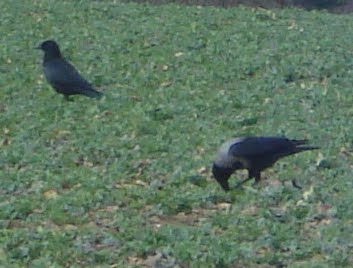


This SWT reserve fringes Duddingston Loch in the south east side of the city. It's a good area for water birds and there is a well known heronry on the south side(access to this area by permission only).
This week winter has returned, with temperatures in the low single figures and blizzards forecast for tomorrow. However, I managed to hear my first Chiffchaff, see my first batch of frogspawn and see White Butterbur in flower (last two pictured above). I also caught two herons in the act of a tree-top mating (a brief,noisy, and ill-tempered affair), and had view of a Kingfisher for a fleeting few seconds. Also present were several Teal, a few Goldeneye, and a Dabchick. So, worth the visit then, despite the cold.




